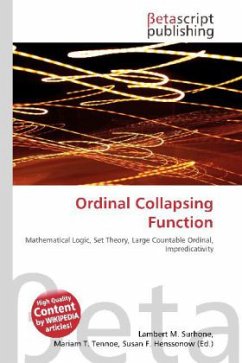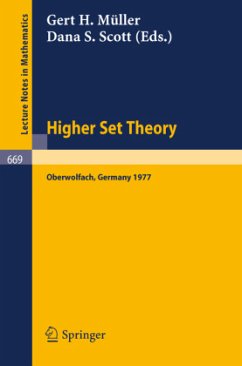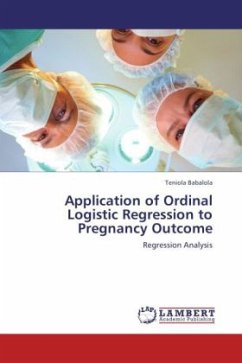
Ordinal Collapsing Function
Versandkostenfrei!
Versandfertig in 6-10 Tagen
23,99 €
inkl. MwSt.

PAYBACK Punkte
12 °P sammeln!
Please note that the content of this book primarily consists of articles available from Wikipedia or other free sources online. In mathematical logic and set theory, an ordinal collapsing function (or projection function) is a technique for defining (notations for) certain recursive large countable ordinals, whose principle is to give names to certain ordinals much larger than the one being defined, perhaps even large cardinals (though they can be replaced with recursively large ordinals at the cost of extra technical difficulty), and then collapse them down to a system of notations for the so...
Please note that the content of this book primarily consists of articles available from Wikipedia or other free sources online. In mathematical logic and set theory, an ordinal collapsing function (or projection function) is a technique for defining (notations for) certain recursive large countable ordinals, whose principle is to give names to certain ordinals much larger than the one being defined, perhaps even large cardinals (though they can be replaced with recursively large ordinals at the cost of extra technical difficulty), and then collapse them down to a system of notations for the sought-after ordinal. For this reason, ordinal collapsing functions are described as an impredicative manner of naming ordinals. The details of the definition of ordinal collapsing functions vary, and get more complicated as greater ordinals are being defined, but the typical idea is that whenever the notation system runs out of fuel and cannot name a certain ordinal, a much larger ordinal is brought from above to give a name to that critical point. An example of how this works will be detailed below, for an ordinal collapsing function defining the Bachmann-Howard ordinal (i.e., defining a system of notations up to the Bachmann-Howard ordinal).












